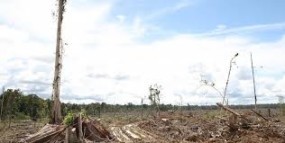Posted on 18 Aug 2012
In recent years, with greater understanding of the need to protect the environment and a better appreciation of what the environment can and cannot sustain, regulation, and in some cases, criminalization of harm to the environment is becoming more accepted. Environmental crime has been identified as one of the most profitable and fastest growing areas of international criminal activity, with increasing involvement of organized criminal networks. Serious environmental harms committed by otherwise legitimate corporations for financial motives are increasingly attracting media attention. At the 12th United Nations Congress on Crime Prevention and Criminal Justice (2010), the international community acknowledged the challenges posed by emerging forms of crime that have significant impact on the environment and called on Member States to study this issue and share best practices.
Despite this growing awareness, environmental crimes often fail to prompt the required response by governments, the enforcement community and the public. Often perceived as “victimless”, environmental crimes do not always produce an immediate consequence, the harm may be diffused or go undetected for a lengthy period of time. Added to this is the fact that many environmental disruptions are actually legal and take place with the consent of society. Classifying what is an environmental crime involves a complex balancing of communities’ interest in jobs and income with ecosystem maintenance, biodiversity and sustainability.



